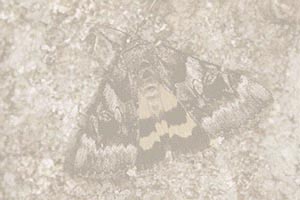|
Publications
Taxonomic Notes
Rearing:
Wild larvae
Eggs from females
iNat Wishlist:
ilia vs. umbrosa
Larvae on Rosaceae
mtDNA: praeclara
More About:
Maps & images
The authors
|
|
iNat Wishlist
There are a number of taxonomic issues being worked on in advance of the MONA Catocala Fascicle,
and the iNaturalist community is certainly in a position to help out! On this page we list a few
current conundrums (and will update these from time to time).
ilia vs. umbrosa.
The adults are usually readily separable, but we have yet to find consistent morphological
characters to distinguish larvae of ilia from umbrosa, despite having reared a number of broods ex ovis from known
females. Each species has comparable larval color/pattern morphs, including a brownish bark-like morph and a gaudy "lichen mimic" morph
with black markings on a pale greenish-white ground color. The lichen mimic morphs are by far the most frequently reported Catocala
larvae on iNaturalist, well surpassing all other larval records combined. Most of these records clearly represent larvae that are actively seeking
out pupation sites, and so could be brought indoors without the need for further feeding, and reared to adults, which can then be photographed
and released after linking the adult to its larval image on iNaturalist. In this way, we may be able to ascertain subtle species-specific
larval characters, and could also gain insight into the frequency of the different larval morphs as a function of geography and possibly
habitat and/or oak foodplant. Thus, please help contribute to solving a vexing issue for two commonly encountered underwing species!
Larvae on Rosaceae.
There are 15 species of Nearctic Catocala whose larvae feed on Rosaceae (hawthorms, plums, cherries et al.). These species form
a well-defined clade in the genus
(Homziak et al. 2023), and their larvae can usually be
separated by the lateral filaments, the majority of which
are branched (bifurcating to multifurcating) (ilia and umbrosa also routinely have branched filaments; a few
branched filaments occasionally appear in larvae of other oak-feeders). However, larvae of all Rosaceae-feeding species
are notoriously variable in morphology and overlap in color, maculation and structural characters, and their feeding preferences in
the field are incompletely chronicled.
With the exception of clintonii, ultronia,
orba and probably miranda, in many geographic areas one usually cannot confidently assign a larva on Rosaceae to species without
rearing out the adult moth... so targeting Rosaceae-feeding larvae is an endeavor where iNaturalists can really help to raise
the bar! Larvae of the Rosaceae-feeders can sometimes sport
a dark dorsal "racing stripe" running the length of the body, and the presence of this characteristic is polymorphic
within a single brood, and appears to be most commonly seen in blandula, lincolnana and pretiosa.
mtDNA from praeclara.
Although praeclara and alabamae are separable as adults by morphology and mtDNA barcode profiles throughout most of their geographic ranges,
there is a large area centered on the Great Lakes region where specimens otherwise "readily attributable" to praeclara in fact harbor an
alabamae haplotype. This is perhaps not unanticipated given the close relationships of these two species (and indeed all the smaller
Rosaceae feeders) but more barcoded adult vouchers are needed to disentangle how many and which species are involved and where,
as well as understand what factors may be responsible for the morphology/haplotype "mismatch." We are seeking additional adult specimens
that look like praeclara from the
following locations: northern Illinois, Indiana, Michigan, Ohio, far western Pennsylvania and New York, and in and adjacent to the southern extent
of the Grenville geological province in Canada. Of particular interest are adults from eastern Ontario, roughly between Toronto
and Ottawa, and circa 50-75 miles on either side of a transect line defined by the towns of Barrie, Peterborough,
and Kingston (click here
for a diagram depicting the approximate southern extent of Grenville Province in Ontario).
|
|
